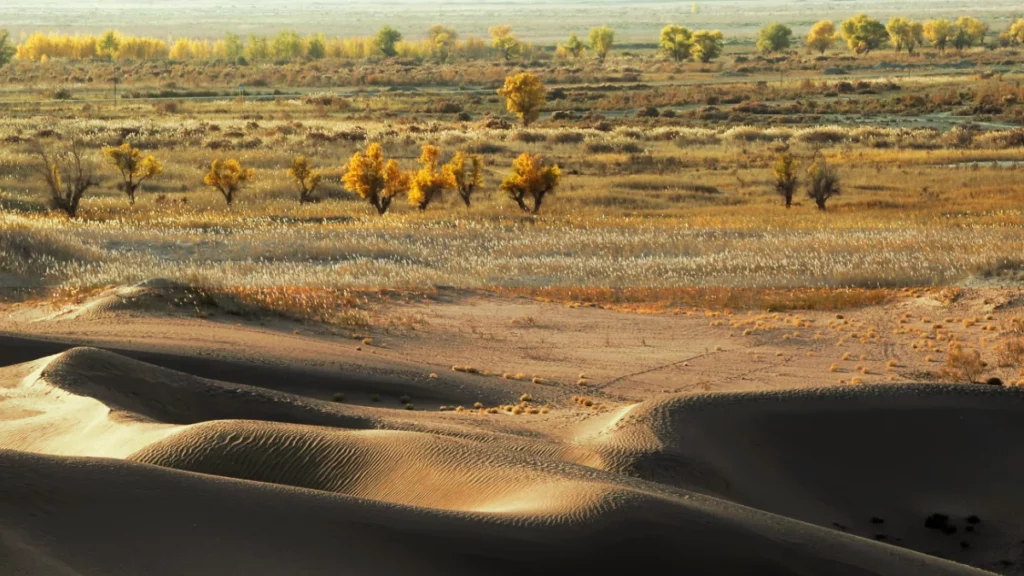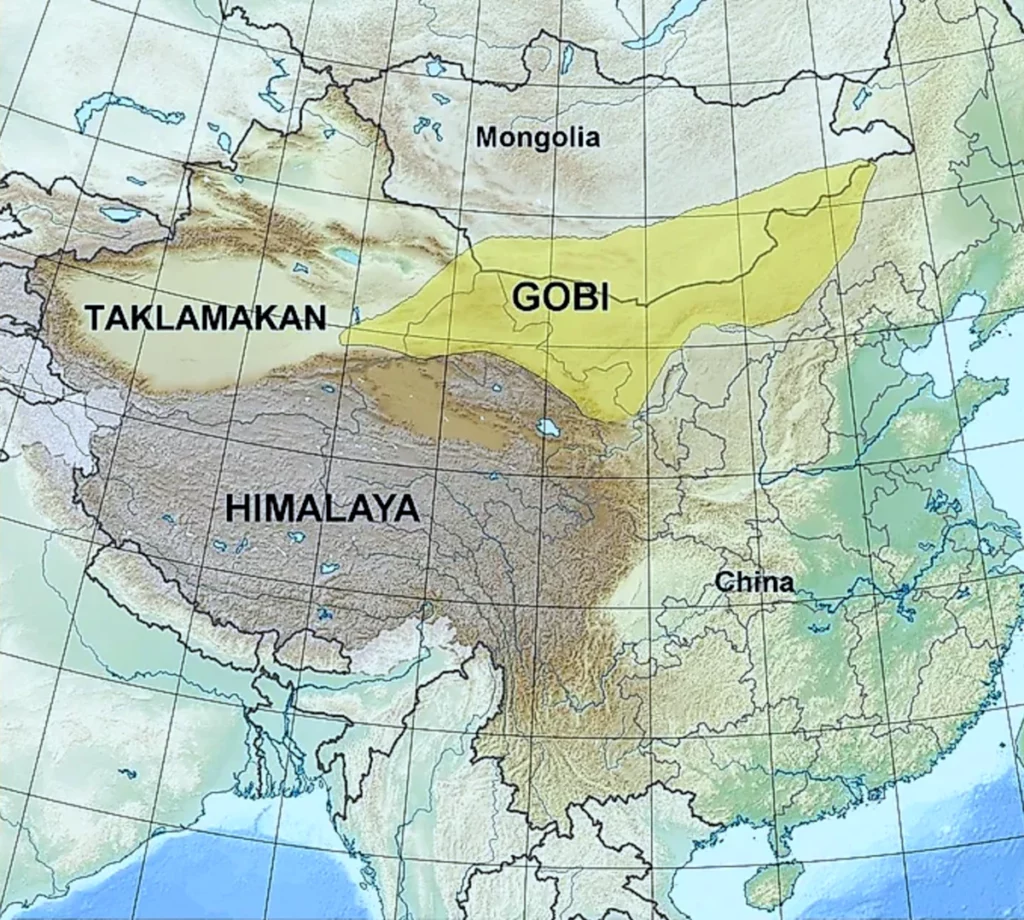China has officially completed a 1,900-mile green belt around the Taklamakan Desert, the largest desert in the country and the second-largest shifting desert in the world.
This project aims to combat desertification and reduce the impact of sandstorms that have long threatened surrounding areas.
The Taklamakan, often called the “sea of death,” spans 130,350 square miles (337,600 square kilometers), with 85% covered by shifting sand dunes.
The initiative combines solar-powered sand-blocking technology with extensive vegetation planting to stabilize the desert’s edges.

A 46-Year Afforestation Effort
The green belt project took 46 years to complete, beginning in 1978 as part of China’s broader efforts against desertification.
The final stretch was planted in Yutian County, where workers introduced various drought-resistant species, including desert poplar and red willow.
This phase involved a workforce of 600,000 people, highlighting the scale of the effort.
Researchers like Lei Qiang from the Chinese Academy of Sciences noted that this green belt will help protect vital infrastructure such as railways and roads from encroaching sand.
Economic Impact
The green belt is expected to create economic opportunities for local communities.
Some of the planted species, like the medicinal desert hyacinth, could provide financial benefits.
Additionally, the recently opened Hotan-Ruoqiang railway connects desert cities and facilitates the transport of local goods such as walnuts and red dates across China.
This infrastructure improvement is crucial for boosting regional economies and enhancing trade.

A Model for Global Initiatives
China’s success with the Taklamakan Desert offers a potential model for other countries facing desertification challenges.
Similar to Africa’s Great Green Wall, which aims to combat desert expansion across the Sahara, this project combines ecological restoration with renewable energy development.
Future plans include a major energy project by the China Three Gorges Corporation that will add 8.5 gigawatts of solar power and 4 gigawatts of wind energy in the region.
These initiatives position Xinjiang as a leader in renewable energy while addressing environmental issues.

Read also: Woman Plants Trees for 35 Years, Turns Desert into Forest

Your n°1 source of information on the world of sandsports and desert adventure travel. Our articles are the result of extensive research, personal experience, and knowledge-sharing within the global sandboarding community.